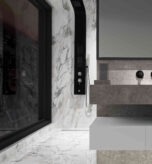As concerns about climate change and environmental sustainability grow, the construction industry is under pressure to adopt greener practices. Building materials play a significant role in the environmental impact of construction projects. Traditional materials like concrete and steel contribute to carbon emissions and resource depletion. In contrast, eco-friendly building materials are designed to reduce environmental harm and improve the sustainability of construction.
Eco-friendly materials aren’t just about reducing pollution; they also offer durability, energy efficiency, and healthier indoor environments. This article explores various sustainable materials and their impact on modern construction, examining how these choices shape a more sustainable future.
1. Recycled and Reclaimed Materials
Using recycled and reclaimed materials is one of the most effective ways to reduce the environmental impact of construction. These materials often come from demolished buildings or industrial waste, repurposed into new construction projects. Common examples include recycled steel, reclaimed wood, and even recycled glass. Recycled steel, for example, retains the same strength as new steel but with a significantly lower carbon footprint since it reduces the need for resource-intensive mining.
Reclaimed wood is another popular choice, particularly in interior design and structural frameworks. By using reclaimed wood, builders reduce the demand for new timber, helping preserve forests and prevent deforestation. Additionally, reclaimed wood often has a unique character that adds aesthetic appeal to a space. Incorporating recycled and reclaimed materials not only conserves resources but also minimizes waste, which is crucial for sustainable development.
2. Bamboo
Bamboo has become an increasingly popular building material due to its fast growth rate, strength, and versatility. Unlike hardwoods, which take decades to mature, bamboo reaches maturity in just three to five years. It regenerates quickly and can be harvested without replanting, making it a highly renewable resource.
Bamboo is extremely strong and durable, making it suitable for flooring, wall panels, and structural components. Additionally, its flexibility allows it to withstand earthquakes better than many conventional building materials. Bamboo’s aesthetic appeal and sustainability make it a favorite for eco-friendly construction projects, particularly in regions with a warm climate. As an affordable and renewable alternative, bamboo is helping the industry shift toward more sustainable building practices.
3. Sustainable Concrete
Concrete is one of the most widely used construction materials globally, yet its production is a major source of carbon emissions due to the energy-intensive cement manufacturing process. Sustainable alternatives, like “green concrete” or “carbon-negative concrete,” offer a solution by using recycled materials and reducing the carbon footprint.
One approach involves using fly ash, a byproduct of coal combustion, or slag, a byproduct of steel production, as a partial replacement for cement in concrete. This substitution not only reduces emissions but also repurposes industrial waste. Some innovative companies have even developed concrete that captures CO₂ from the atmosphere as it hardens, effectively making it carbon-negative. These advancements in sustainable concrete are vital for reducing the environmental impact of large-scale construction projects.
4. Straw Bales
Straw bales are an eco-friendly, cost-effective insulation material that has been used in construction for centuries. Straw is a byproduct of agricultural crops, making it a readily available and renewable resource. Straw bales provide excellent thermal insulation, reducing the need for additional heating or cooling, which lowers energy consumption.
In modern construction, straw bales are typically used within the walls of a building, offering natural insulation and soundproofing. They are non-toxic and biodegradable, meaning they have minimal environmental impact at the end of their lifecycle. Straw bale construction is becoming popular in sustainable housing, as it not only lowers energy costs but also reduces the building’s overall carbon footprint.
5. Rammed Earth
Rammed earth is an ancient building technique that uses natural materials, primarily earth, to construct durable walls. The soil is compacted into formwork to create solid, load-bearing walls that are both energy-efficient and fire-resistant. Rammed earth structures have a high thermal mass, meaning they can absorb and slowly release heat, helping to maintain a stable indoor temperature.
This technique requires minimal processing and transport, reducing the overall environmental impact. Rammed earth construction can also be combined with other eco-friendly materials, such as recycled aggregate or bamboo, for added strength and sustainability. It is ideal for dry climates and offers a natural, earthy aesthetic that appeals to eco-conscious builders and homeowners.
6. Insulated Concrete Forms (ICFs)
Insulated Concrete Forms (ICFs) are a modern solution for sustainable construction, offering both energy efficiency and durability. ICFs are created by stacking hollow blocks made of foam insulation, which are then filled with concrete. The result is a strong, energy-efficient wall system that significantly reduces heating and cooling costs.
ICFs provide excellent thermal insulation, which lowers energy consumption and greenhouse gas emissions over the building’s lifetime. Additionally, ICFs are resistant to fire, moisture, and pests, making them durable and low-maintenance. This construction method is particularly useful in regions with extreme weather conditions, as it provides a robust and sustainable building solution.
7. Cork
Cork is a renewable material harvested from the bark of cork oak trees, which regenerate their bark every nine years. Cork is lightweight, water-resistant, and has excellent thermal and acoustic properties, making it ideal for flooring, insulation, and soundproofing.
Its sustainability stems from the fact that cork trees do not need to be cut down to harvest cork, preserving the forests and contributing to biodiversity. Cork’s natural resistance to mold and fire further adds to its appeal in sustainable construction. As an eco-friendly alternative to synthetic materials, cork is gaining popularity in green building projects focused on indoor health and environmental responsibility.
The Impact of Eco-Friendly Materials on Modern Construction
Eco-friendly building materials have far-reaching benefits that extend beyond environmental conservation. Here’s how these materials are reshaping the construction industry:
- Reducing Carbon Footprint: Sustainable materials reduce greenhouse gas emissions, either by requiring less energy to produce or by actively absorbing CO₂. This reduction is essential in combatting climate change and lowering the overall carbon footprint of buildings.
- Energy Efficiency: Many eco-friendly materials offer superior insulation and thermal properties, reducing the need for artificial heating and cooling. By lowering energy consumption, these materials help reduce costs and promote sustainable living.
- Improved Indoor Air Quality: Materials like straw bales, bamboo, and cork are non-toxic and emit fewer volatile organic compounds (VOCs), creating a healthier indoor environment for occupants.
- Lower Waste Production: The use of recycled, reclaimed, and biodegradable materials minimizes waste and reduces the need for new raw materials. This circular approach to building materials supports resource conservation and waste reduction.
- Longevity and Durability: Many sustainable materials, such as rammed earth and ICFs, are highly durable and require minimal maintenance, leading to long-lasting buildings that conserve resources over time.
Conclusion
Eco-friendly building materials are transforming modern construction by providing sustainable alternatives that reduce environmental harm and promote energy efficiency. These materials allow the industry to build structures that are not only functional and durable but also aligned with global sustainability goals. As demand for green construction continues to rise, innovative materials like bamboo, recycled steel, and sustainable concrete are likely to become standard choices, shaping a future where buildings contribute to a healthier planet.
Adopting eco-friendly materials is more than a trend; it’s a necessary shift toward responsible construction practices that prioritize both people and the planet. By embracing sustainable materials, the construction industry can lead the way in building a greener, more resilient world for generations to come.






